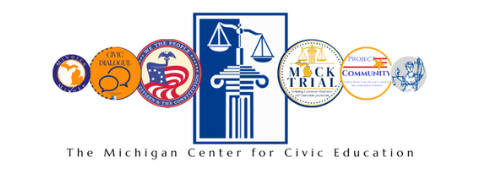Students will learn about the process of amending the Constitution. They will review the details of the amendment process and discuss its pros and cons. In class activities, assignments, and the Lesson Extensions, student partners and groups will create persuasive presentations that they will share with the class to gain support for an amendment.
Civics Lessons
What Makes an Amendment?
Equal Justice Under Law
In this lesson, students explore the cause-and-effect relationships
between historical events and the development of constitutional
principles that protect the rights of all people in America today. In its first constitutional challenge to the equal protection clause of the Fourteenth Amendment, the U.S. Supreme
Court decided to hear a case brought by a Chinese immigrant, not an American citizen.
The First Amendment: What’s Fair in a Free Country?
Lesson includes several activities to demonstrate to students that freedom of speech continues to evolve.
A History of Conflict Resolution and the Jury System
Students will gain an understanding of the modern jury system and historical methods of conflict resolution. They will compare and contrast the different trial methods of past and present, and analyze each as a way to resolve conflict. They will examine jury trials and the responsibility to decide the facts pertaining to key questions that jurors must answer. Then students will write a persuasive essay arguing for their preferred method of trial.
Appellate Courts: Let’s Take It Up
Students learn what happens in appellate-level courts and how those courts operate differently from the trial courts most people are familiar with from watching television. By following the case of a real middle school girl who was strip searched at school, students find out what happens when someone takes a case all the way to the Supreme Court. Through this case, students learn about the structure of the federal court system and the way appellate courts decide cases.
Voir Dire Simulation
In this lesson, students will role play real lawyers as they carry out a voir dire simulation for jury selection. They will draft lists of favorable characteristics of jurors beforehand to aid in their questioning. Students will think critically about important juror characteristics, and identify factors – such as race, socio-economic status, and age – that may have influenced the voir dire process.
Prepare for Trial
In this lesson, students will learn about the relationship between constitutional rights and fair and unbiased jury selection. Students will focus on the process for selecting members of a jury. In addition, they will learn vocabulary relevant to understanding court proceedings, which they will apply in making juror selections. Throughout the main activities and lesson extensions, students will investigate the relationship between constitutional rights and fair and unbiased jury selection.
The U.S. Constitution: Continuity and Change in the Governing of the United States
This unit examines continuity and change in the governing of the United States. Lessons one and two are focused on a study of the Constitution and Bill of Rights and provide access to primary source documents from the Library of Congress. Lesson three investigates important issues which confronted the first Congress and has students examine current congressional debate over similar issues. Lesson four features broadsides from the Continental Congress
Qualities of Judges
Students brainstorm qualities that judges might possess, then discuss why those qualities are important.
The Public Sphere
Public sphere, public agenda, public opinion, public policy… What’s the difference? Students discover the relationships among these concepts and how they influence the issues we all discuss and care about.

